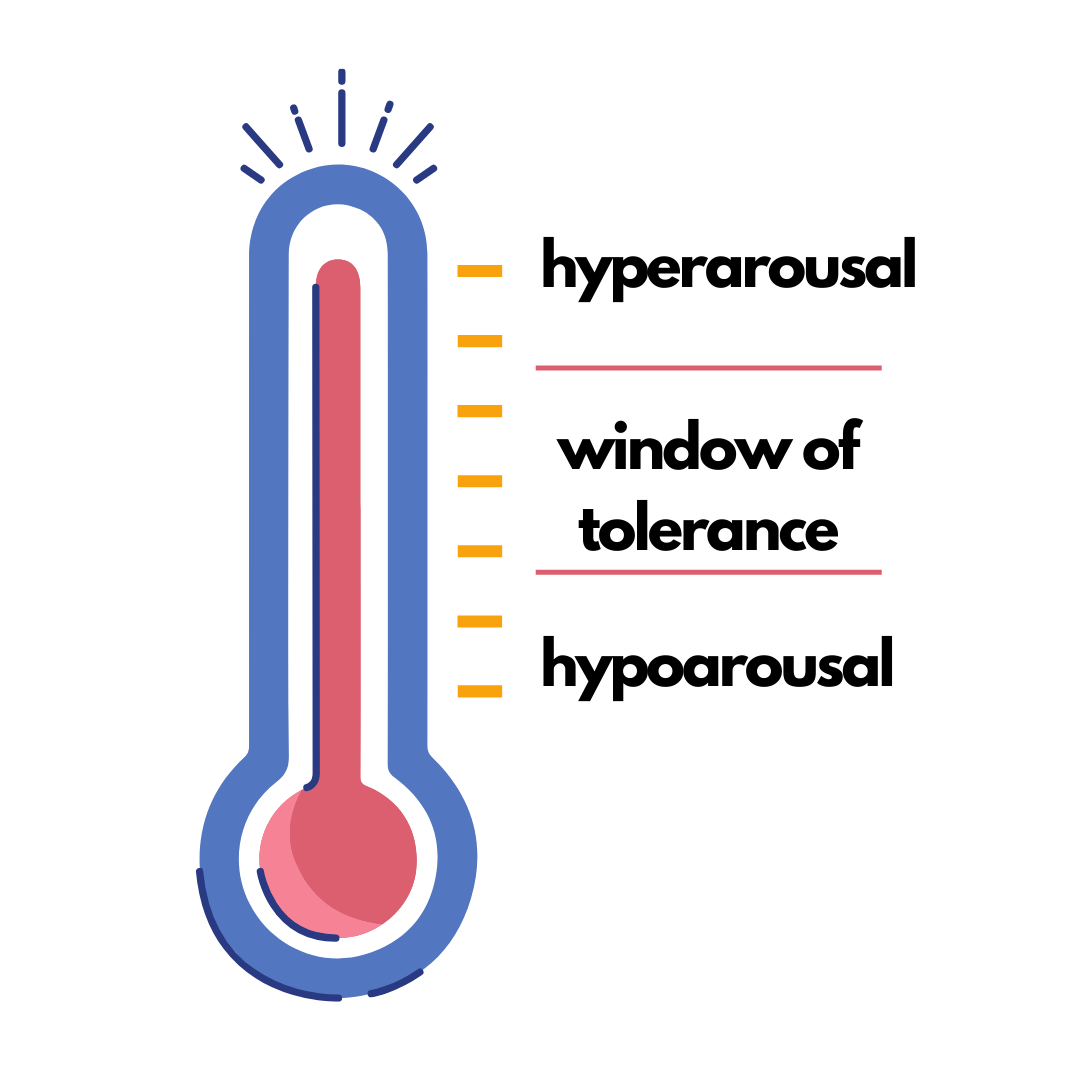What is the ‘Window of Tolerance’?
What is the ‘Window of Tolerance’?
The window of tolerance, coined by Dr. Daniel Seigel, is a "zone" or window in which we are able to function most effectively. When people are within this zone, they are typically able to receive, process, and integrate information and respond to the demands of everyday life without much difficulty.
We may experience hurt, anxiety, pain, and anger that brings us close to the edges of the window of tolerance but generally, we are able to utilize coping skills to keep us within this window. When we experience adversity through trauma, this can drastically disrupt our nervous system, which can push us out of our window of tolerance, thus putting ourselves in a state of hyperarousal or hypoarousal.
When out of our window of tolerance, our senses are heightened and our experiences and reactions are typically intensified and coping skills are less readily accessible to us. Trauma experiences also shrink our window of tolerance, meaning we have less capacity to ebb and flow and a greater tendency to become overwhelmed more quickly. Learning how to track and shift our window of tolerance can be a powerful tool for promoting self-regulation.
Calm arousal (within the window of tolerance) is the ideal state and that most times during the day we fluctuate within various levels of calm arousal.
Hyperarousal is characterized by excessive activation/energy often in the form of anxiety, panic, fear, hypervigilance, emotional flooding etc. This keeps our system stuck on and impacts our ability to relax, often making it difficult to sleep, eat, and manage our emotions.
Hypoarousal may occur when we have too much hyperarousal, overwhelming our brain/body, causing us to plunge into a state of hypoarousal (shutting down or dissociating). In this state our system can become stuck on/off, characterized by exhaustion, depression, flat affect, numbness, disconnection, dissociation etc. This too impacts our sleep in that we may want to sleep all the time, this impacts our appetite, as well and may make us feel emotionally detached.
Calming Exercises
Here is a list of three useful self-regulating exercises that can help us both widen, and get back into our window of tolerance. It is important to practice and utilize these calming exercises, even within our window of tolerance, so that when we most need them, they feel familiar and are more readily available.
5 senses:
Bring attention to the present moment.
What are 5 things you can see? Look for small details such as a pattern on the ceiling, the way light reflects off a surface, or an object you never noticed
What are 4 things you can feel? Notice the sensation of clothing on your body, thesun on your skin, or the feeling of the chair you are sitting in. Pick up an object and examine its weight, texture, and other physical qualities.
What are 3 things you can hear? Pay special attention to the sounds your mind has tuned out, such as a ticking clock, distant traffic, or trees blowing in the wind.
What are 2 things you can smell? Try to notice smells in the air around you, like an air freshener or freshly mowed grass. You may also look around for something that has a scent, such as a flower or an unlit candle.
What is 1 thing you can taste? Carry gum, candy, or small snacks for this step. Pop one in your mouth and focus your attention closely on the flavors. (therapistaid.com)
Square breathing:
This can be done by picking up and tracing a square object or outlining a square on your palm. Start at the bottom right of the square and follow the lines around the square to complete one deep breath.
Breath in for four seconds
Hold for four seconds
Release for four seconds
Hold for four seconds
Repeat
Body Awareness
The body awareness technique will bring you into the here-and-now by directing your focus to sensations in the body. Pay special attention to the physical sensations created by each step.
Take 5 long, deep breaths through your nose, and exhale through puckered lips.
Place both feet flat on the floor. Wiggle your toes. Curl and uncurl your toes several times. Spend a moment noticing the sensations in your feet.
Stomp your feet on the ground several times. Pay attention to the sensations in your feet and legs as you make contact with the ground.
Clench your hands into fists, then release the tension. Repeat this 10 times.
Press your palms together. Press them harder and hold this pose for 15 seconds. Pay attention to the feeling of tension in your hands and arms.
Rub your palms together briskly. Notice and sound and the feeling of warmth.
Reach your hands over your head like you’re trying to reach the sky. Stretch like this for 5 seconds. Bring your arms down and let them relax at your sides.
Take 5 more deep breaths and notice the feeling of calm in your body. (therapistaid.com)

